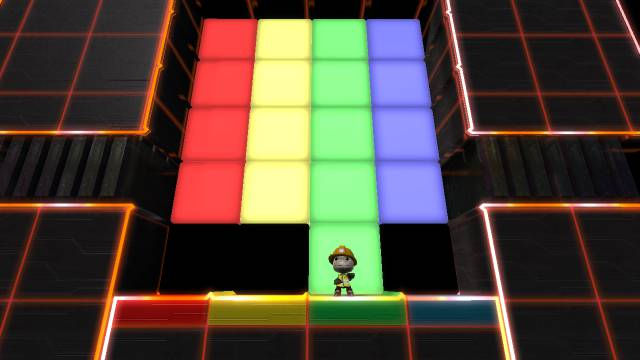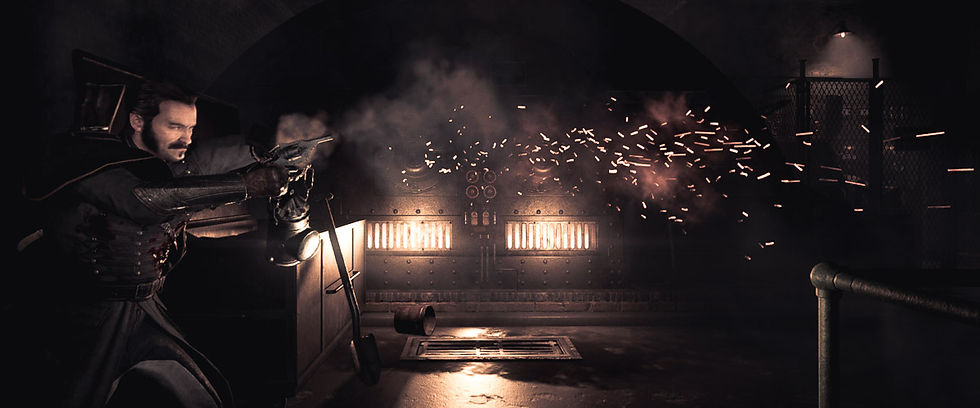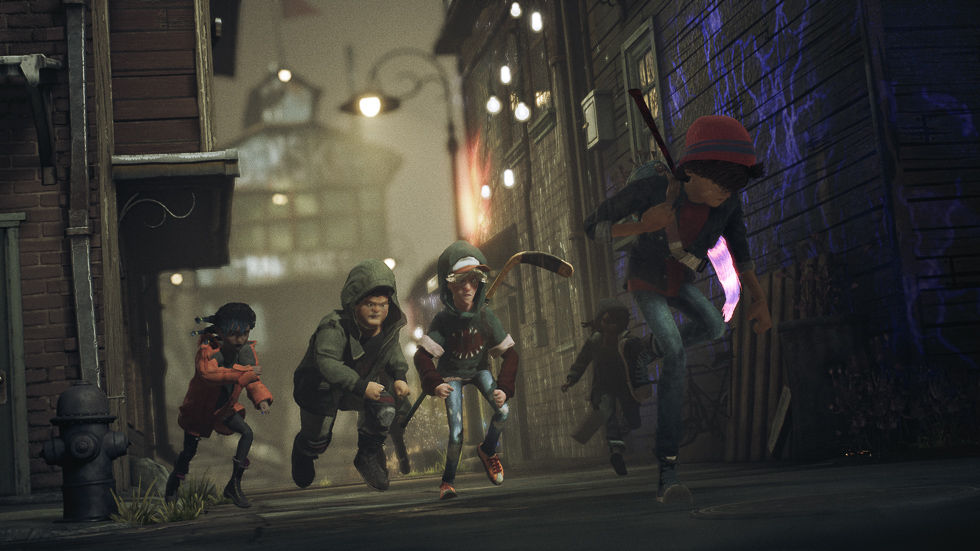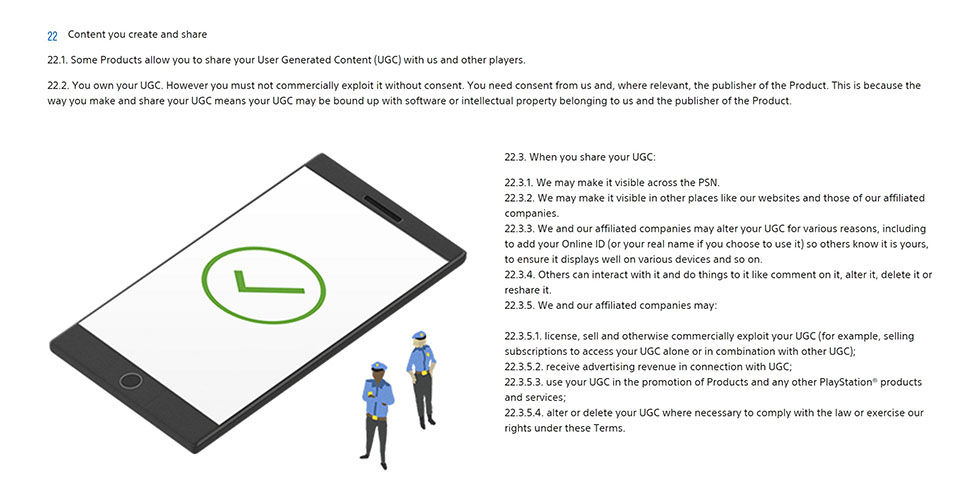- Mik Bromley

- Sep 25, 2020
- 9 min read
Updated: Jun 3

Originally an industry-serving process, video game capture art may once have been an internal affair where staff or freelance artists would work with the game engine tools to capture still image and video assets, specifically to generate promotional material for the studio or publisher. Since then though, the more widespread availability of open source camera tools on PC, and the advent of consumer level photo modes on game consoles, has led to capture art and virtual photography becoming a popular pastime of players in general.
This step from industry to the consumer domain has raised some interesting questions about the ownership of captured images, and the speed with which the medium has grown means that they remain largely unanswered. Do publishers have the right to use people's captures as they see fit; and can the legitimately talented virtual artists protect or even exploit their work themselves? With few publishers wanting to publicly commit to a stance, and little or no case law to set a precedence, this remains something of a grey area and many users are understandably confused over exactly who owns their work.

...works expressed by a process analogous to photography?
While there isn't any one single answer to this, it is much simpler to understand than most might expect and I hope to explain the broader points here, but first a few disclaimers of my own. Being based in the UK, I am using current UK legislation and usage terms for the main points of legal reference, along with information from the UK Intellectual Property Office (IPO), Copyright Licensing Agency (CLA) and copyright officers at my own place of work. This piece is provided for information only and should not be considered legal advice. Please consult your own local laws and regional terms if you have any specific concerns.
TL;DR - you own your virtual photographs but not the license for commercial exploitation. Read on to find out exactly why...
Definitions:
So that everything is as clear as can be, let's start off with some definitions of exactly what some of the key terms mean...
Intellectual Property (IP) - any idea, invention or creation that derives from the work of the mind. IP can be protected by enforceable law from being copied and you own an IP if you create an original work, or purchase the rights from the original creator.
Copyright © - a form of IP protection that grants the holder exclusive legal rights to produce copies, publish, distribute or exploit an original work. Copyright is cost-free and assigned automatically when an IP is made into an original and tangible piece of work.
Trademark ™ - a form of paid IP protection used to restrict the use of a name, symbol or mark that distinguishes a particular brand or product through legal registration or established use.
Derivative work - any creative work that is based on or derived from other pre-existing works. The derivative work may include other copyrightable elements and if sufficiently different can be protected as a separate original work.
User Generated Content (UGC) - any form of content created or shared by users of a service or platform. This can include text, audio, video, images, photographs and platform / game assets.

Image Copyright:
To understand the ownership rights on an original virtual photograph, itself a form of UGC, we must first consider how copyright may be attributed to it. While copyright and commercial license is relatively common knowledge and more clear cut for real world photographers, many of whom use it as a profession, virtual photography's added complications do make things less obvious. However, that is not to say that you as a photo mode user are deprived of the same rights as your regular photography counterparts.
In fact, there are several legal guidelines that make things quite clear in this regard, most fundamentally among which is The Berne Convention for the Protection of Literary and Artistic Works. Upheld by the World Intellectual Property Organization (WIPO), this is an internationally recognised agreement, dating back as far as 1886 and last amended in 1979, that forms the basis of many contemporary copyright laws.

The Berne Convention establishes several important aspects of copyright protection, such as the fact that copyright is assigned immediately and without the need for registration, and that derivative works are eligible to be granted their own original copyright protection. Particularly useful for the context of this article though, is a definition of the types of copyright-eligible creative works which includes the following:
"photographic works, to which are assimilated works expressed by a process analogous to photography"
The Berne Convention, Article 2 - Protected Works, WIPO
Similar eligibility is found in current local laws, such as the UK Copyright, Designs and Patents Act 1988, which again ensures that copyright arises automatically and remains in place for life + 70 years. A primary qualifying factor is that the work must be original, generally defined as originating from an author / artist who used some judgement or skill in its creation, and is awarded irrespective of artistic quality.
From a legal standpoint then, there should be no difficulty in differentiating an image that is produced with creative tools such as a photo mode, and that deviates from the game's original presentation, as a piece of derivative artwork deserving of its own original copyright. The owner of the copyright is then irrefutably the virtual photographer who composed the image, granting them the exclusive legal right to copy and distribute it. Anyone else wishing to use the work must seek consent and properly credit the owner and / or source.
Note - this would not include screenshots of the original presentation of a game, or of a cinematic cutscene where camera framing cannot be altered. Each of these constitute copies of an original and as such, are not granted original copyright of their own.

Key point - an original virtual photograph is eligible by law for copyright protection, granting the photographer exclusive right to copy and distribute the image.
So, does that mean you can freely sell your photo mode creations, or otherwise use them for commercial gain? Unfortunately no, it is not quite THAT simple and we must also consider the other pieces of IP that are involved...
Existing Intellectual Property:
While the law may be very much in favour of the virtual photographer owning the copyright on the captured image itself, as a piece of UGC and derivative art that makes use of in-game assets, it is also likely to contain other elements of IP that remain the exclusive property of the publisher.
This could be anything from a character, an environment design, or even a texture map; essentially anything that has been produced with creative thought by someone else. What's more, there could even be trademark protected elements in the image such as a game logo, third party brands or licensed vehicles etc. That's not to say that the image can't be used, you certainly hold the right to use and reproduce your work, but selling or otherwise commercially exploiting the images will require agreement for all IP owners, whether by consent agreement or specific license. Once you see it this way, it is easy to understand why the ownership of an image, or at least the right to the commercial use of it, can quickly become complicated.

Are you saying that the publisher owns the image? Absolutely not, while they do own the rights to the content within the game, including all art assets and its original presentation on screen, every original virtual photograph is a separate piece of IP and benefits from its own protection.
As a result, even the publisher or platform holder is legally obliged to seek consent and adequately credit the copyright owner of an image before reproducing it and using it themselves. This could be by an informal request for example, or by inviting you to submit work to a particular event or contest that includes terms to grant an unrestricted license. Either way, you should expect to have taken some deliberate action to give permission for your work to be used.
Key point - while the photographer owns the copyright on each original virtual photograph, other elements of IP that appear within it remain the exclusive property of the publisher.

This may be through ignorance at times...
However, we sometimes see that this is not always the case, and a publisher may choose to use images seemingly without credit or consent. I'll cover copyright infringement and what to do about it in a future post, so putting internet misuse and the flagrant disregard for any and all copyright law shown by many online users to one side for now, why would a reputable organisation do that?
Well, some publishers may try to claim more rights over your image, as a piece of UGC, than copyright law alone would ordinarily permit. This may be through ignorance at times, but more likely comes down to the long and boring Terms of Use that you must unavoidably agree to when playing a video game or using a subset of its features...
Terms of Use:
Wise men say always read the small print, and although nobody ever does pay attention to the extensive and inaccessibly worded terms and conditions that we are expected to agree to, they actually can be a useful place to look on occasion.
Terms of Use are put in place mainly to protect their creator from legal action by people they are providing a product or service to, itself something of an indictment on the way of the world, and they will vary by publisher, game and even region. In general, they will cover the same sort of things but it is clear that some can be worryingly restrictive from a virtual photography point of view, while others are much more progressive.

An example of one of the more complicated cases would be the recently released Marvel's Avengers, which not only has the added embroilment of Marvel owned licensing, but is subject to publisher Square Enix's own Terms of Service. It should be said that these terms are far from unique in doing this but, scrolling down to Section 8 for their UGC-specific terms, you will encounter the following:
"you grant Square Enix the unrestricted, worldwide...and cost-free right to use, copy...and otherwise exploit your User-Generated Content without any compensation, notice, or attribution to you"
Terms of Service, Section 8 - User Generated Content, Square Enix
Worse still, the same rights are granted to third parties at the publisher's discretion and obviously this does not make particularly good reading for the virtual photographer or capture artist. The truth is that terms like these are there to protect the publisher from royalty claims etc. rather than to maliciously harvest your good work, but it certainly doesn't do much to foster trust between the two parties.
On the plus side though, there is at least particular admission that these rights apply to the maximum extent permitted by your local law. Rather than being intimidated by these deliberately authoritative-sounding words, you could see them as an indication that the legal standing on copyright ownership discussed above can still be argued.

a desire to do something mutually beneficial...
Of course, it is better for everyone if there is no need to argue over the ownership of the work in the first place, and a seemingly more welcome approach to UGC rights can be found in SIE Europe's PSN Terms of Service and Software Usage Terms. Although there is no denying that there are some similar terms to allow Sony and their partners to use your UGC for their own purposes, and without remuneration, there is a subtle difference in tone here that seems to be heading in the right direction.
"We and our affiliated companies may alter your UGC for various reasons, including to add your Online ID so others know it is yours"
PSN Terms of Service, Section 22.3.3 - Content You Create & Share, SIE Europe
Words like those suddenly don't seem too sinister and you can start to see an acknowledgement of the rights of the artist as well as perhaps a desire to do something mutually beneficial, much like you might see in the PlayStation Blog Share of the Week posts for example. Most refreshing of all though, is the plain language that is used. Amidst such a formal backdrop of legal wrangling, seeing PSN Terms 22.2 simply read "You own your UGC" is extremely welcome. In fact, this particular clause almost entirely sums up this article:
"You own your UGC. However you must not commercially exploit it without consent....This is because the way you make and share your UGC means your UGC may be bound up with software or intellectual property belonging to us and the publisher of the Product."
PSN Terms of Service, Section 22.2 - Content You Create & Share, SIE Europe
Key point - publisher terms of use often claim additional rights for themselves, but a mutually respectful relationship will benefit both parties.

There you have it, outside of the TL;DR, I used over 2,000 words to make the point that was then summed up in just two lines in a terms of service document. I hope though, that this helps to give a more complete understanding of how the established law is firmly in the virtual photographer's favour and, that while publishers may not explicitly say so, they are recognising the rights and talent that this wonderful art form is uncovering.
Use this knowledge to protect your work and also to respect the IP that is uses and I am sure that the future of photo mode capture art will be positive.




















Gurgaon Escort Agency provides a personal and customized service, ensuring that you get exactly what you would like from your time spent with them. They are always willing and happy to comply with your needs and demands to make your experience with them even that more memorable.
The level of thought and effort behind the design is obvious. As I navigated through Love hub, I noticed how intuitive and well-structured everything was. It felt like the platform anticipated my next step. Truly enjoyable to use.
Indulge yourself in perfect company with our Escorts Near The Grand. Create unforgettable moments with our top-most elite and best escort services.
Kaiser OTC benefits provide members with discounts on over-the-counter medications, vitamins, and health essentials, promoting better health management and cost-effective wellness solutions.
Obituaries near me help you find recent death notices, providing information about funeral services, memorials, and tributes for loved ones in your area.
is traveluro legit? Many users have had mixed experiences with the platform, so it's important to read reviews and verify deals before booking.
Impressing the admissions committee starts with a polished personal statement. Residency personal statement editing offers the expertise to enhance your application and showcase your potential.